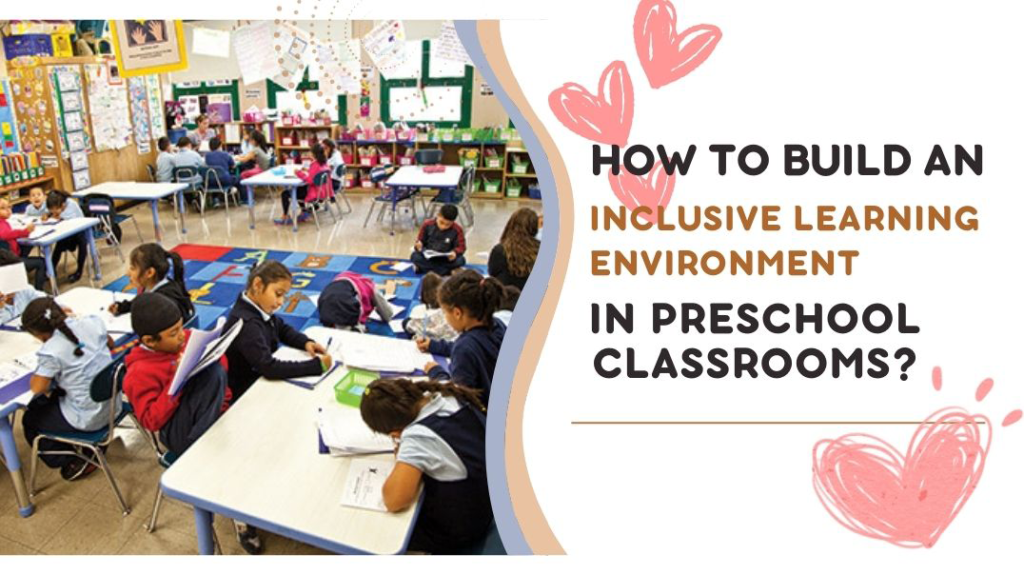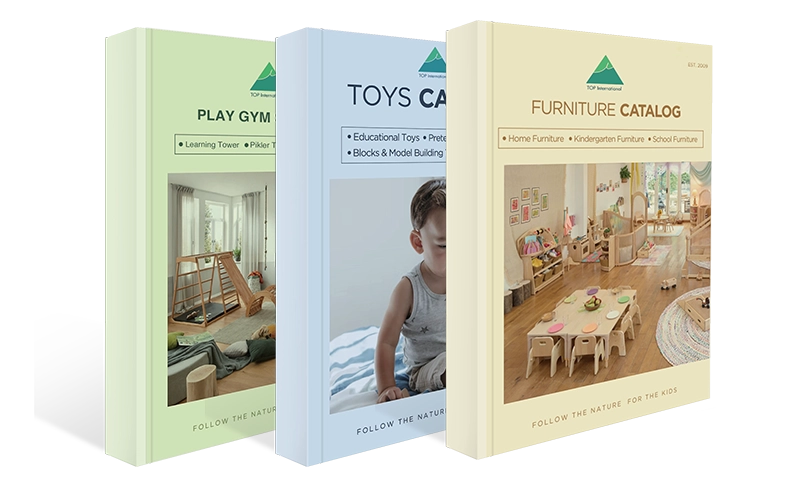Do all children in your preschool classroom feel safe, accepted, and able to participate equally? Are cultural differences, disabilities, or language barriers preventing some students from thoroughly engaging? Have you ever wondered how to design a classroom that supports every preschooler, not just the majority?
An Inclusive Learning Environment ensures that every child, regardless of ability, background, language, or learning style, feels seen, supported, and valued. It promotes equal participation, reduces behavioral challenges, and builds peer empathy. Children in such environments experience stronger social-emotional development, improved cognitive outcomes, and greater confidence. Most importantly, inclusion teaches respect, collaboration, and compassion—skills far beyond the classroom.
Creating an Inclusive Learning Environment isn’t just about following a checklist—it’s about transforming the preschool experience. In the sections, I’ll guide you through proven strategies to help you build a classroom where every child feels empowered to learn, grow, and belong.
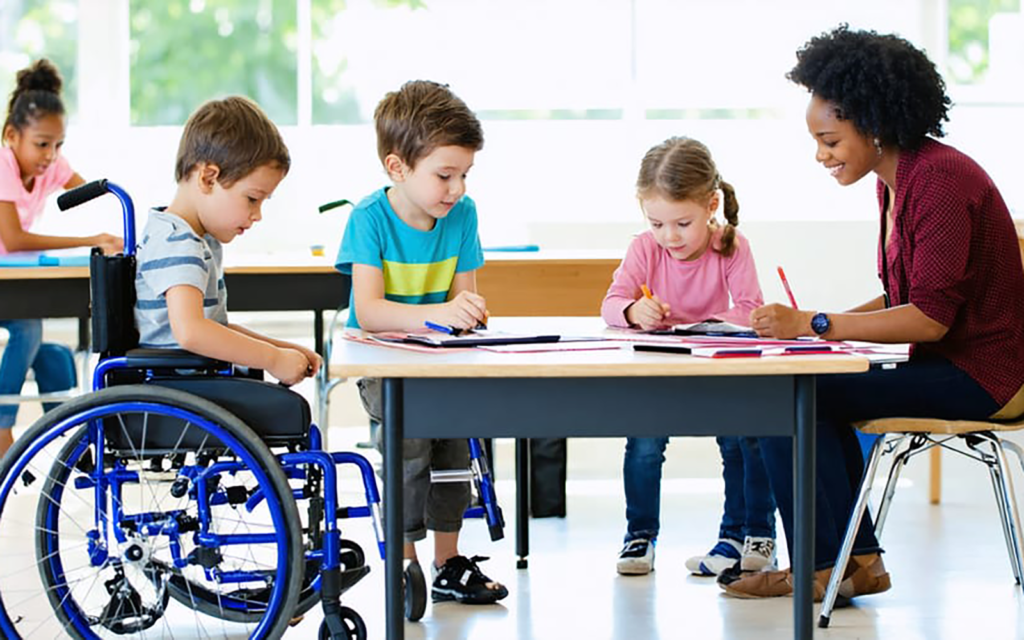
What is an Inclusive Learning Environment?
An Inclusive Learning Environment is more than just a classroom where children of different backgrounds and abilities are present—it’s a space where every child truly feels they belong.
It’s about ensuring that each child has equal access to learning opportunities regardless of their abilities, language, culture, or learning style. This means designing classrooms that not only accommodate differences but celebrate them. Diversity isn’t an obstacle in an inclusive learning environment—it’s a strength.
So, what does inclusion look like in practice?
It can be as simple as providing flexible seating for children with different physical needs. Or offering visual aids and multilingual resources for children learning a second language. It also means selecting books, toys, and teaching materials that reflect various cultures, abilities, and family structures. Most importantly, it means cultivating a culture of respect, where kindness, patience, and empathy are part of the daily routine.
Creating an inclusive learning space benefits children with special needs and all children. It helps them develop social awareness, emotional intelligence, and cooperative skills, which are as important as academic knowledge in early childhood.
Inclusive environments encourage active participation, build confidence, and help prevent isolation or labeling. When children feel safe and supported, they are more likely to take risks, express themselves, and engage meaningfully in classroom activities.
Ultimately, an Inclusive Learning Environment prepares children for school and life. It sets the stage for a more compassionate and collaborative future—one classroom at a time.
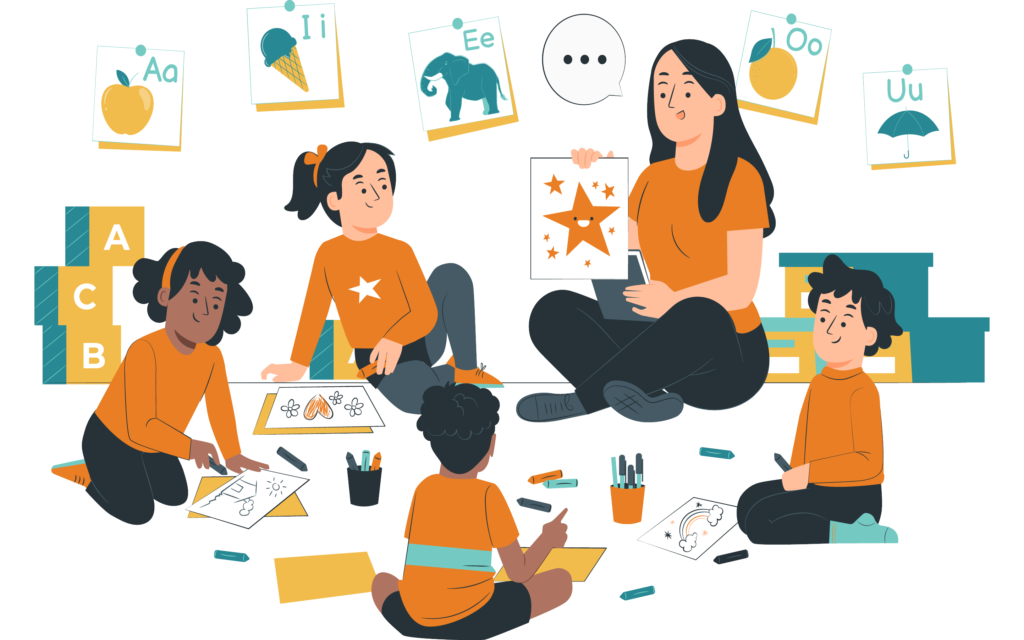
Why Is an Inclusive Learning Environment Important?
In the context of early childhood education, the physical space, the emotional tone, and the social interactions in a classroom all combine to create an inclusive learning environment. This is not just a place where children learn facts and skills. It is a space where identity, empathy, and self-worth are built. Understanding the inclusive learning environment definition helps us realize how central it is to high-quality preschool education.
An inclusive learning environment in early childhood welcomes and supports children from diverse backgrounds, with different learning styles, abilities, and cultural identities. It’s a space where inclusion in learning is not a separate category or special arrangement—it’s the standard, the expectation, and the foundation.
Let’s explore why inclusivity in learning matters, how it benefits every student, and how educators can use effective inclusive learning strategies to transform classrooms into thriving, respectful communities.
Boosting Students’ Self-Esteem Through a Compassionate Culture
How children perceive themselves in a classroom setting sets the tone for their lifelong relationship with learning. In an inclusive learning setting, every child is acknowledged for their academic ability and unique personality, interests, and voice.
Educators who apply inclusive learning approaches, such as differentiated instruction, multilingual materials, or visual supports, communicate a powerful message: “You belong here.” This sense of belonging builds self-esteem. Children don’t have to hide who they are or fear being “different”—they are encouraged to be themselves, and that is where confidence begins.
One of the most transformative aspects of an inclusive learning environment is that it teaches compassion from teacher to student and among peers. Children learn that everyone’s path looks different, not a problem to be fixed, but a reality to embrace.
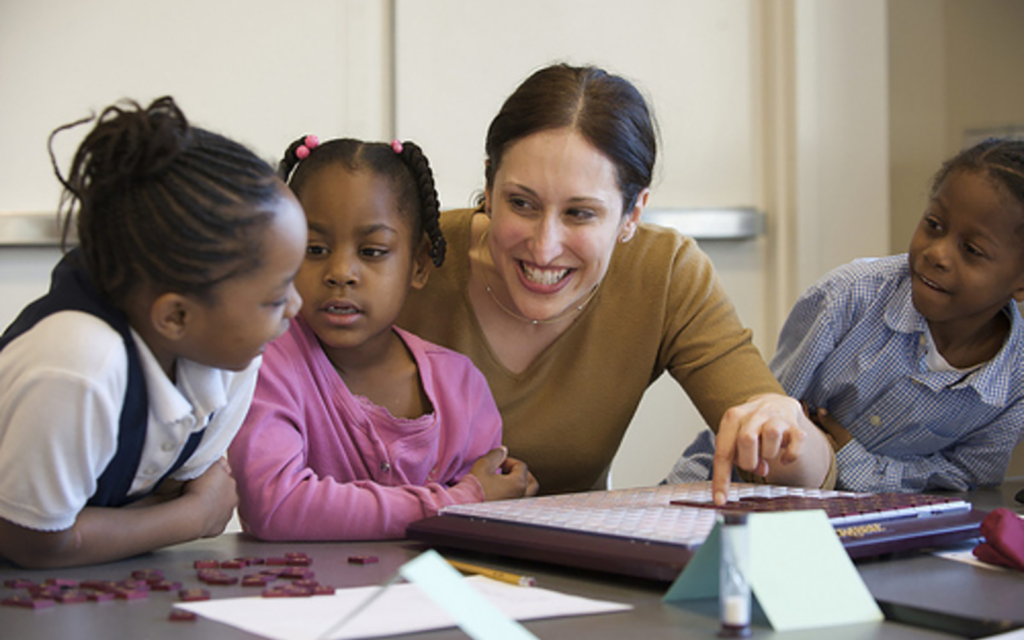
Helping Students Reach Their Potential
A core principle of inclusive learning theory is that each child has the potential to succeed, but not every child will follow the same path to get there. A rigid, one-size-fits-all approach often leaves behind children who may learn more slowly, who speak a different language, or who process information differently.
But with the right inclusive learning strategies, educators can provide multiple pathways for success. Children who need more time are given it, and those who require tactile or sensory-based learning tools receive them. This kind of inclusion learning isn’t about lowering standards—it’s about raising support.
Inclusive learning practices recognize and respond to individual needs. A child who struggles with verbal expression might thrive when allowed to show their understanding through art. Another may need breaks throughout the day to manage sensory overload. These aren’t exceptions—they’re opportunities to help each child shine in their own way.
Working with inclusive learning partners, such as special educators, therapists, or language specialists, also helps extend support beyond the classroom teacher. With collaboration, the full potential of every child can be reached.
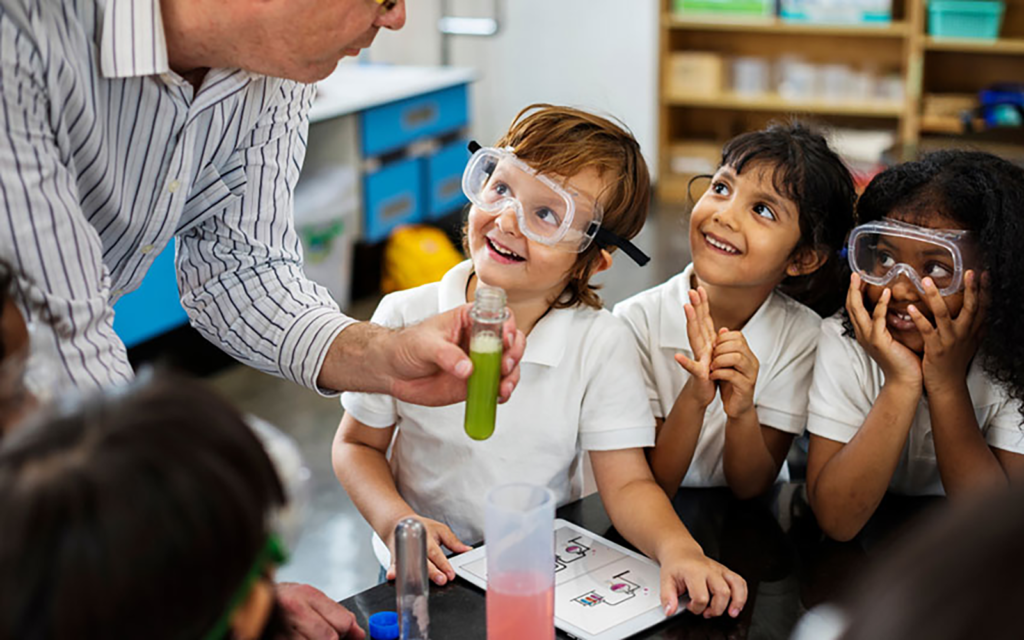
Improving Academic Outcomes
A growing body of evidence shows that inclusive learning environments do more than create warm, friendly atmospheres—they lead to stronger academic performance. When students feel respected and supported, they are far more likely to participate, stay focused, and retain information.
Inclusion doesn’t mean compromising academic standards. Instead, it broadens the range of teaching tools and techniques. Classrooms that use inclusive learning strategies often include multimodal instruction—visual, auditory, tactile, and social methods—that improve comprehension for all learners.
Students in inclusive learning settings benefit from frequent feedback, individualized goals, and meaningful engagement. This consistent, responsive approach means that gaps in understanding are addressed early, before they become entrenched.
The academic success of inclusion learning has been well-documented across different age groups and regions. The best results come when inclusion is not just practiced, but designed into the environment itself—from the physical space to the flow of activities to the tone of communication.
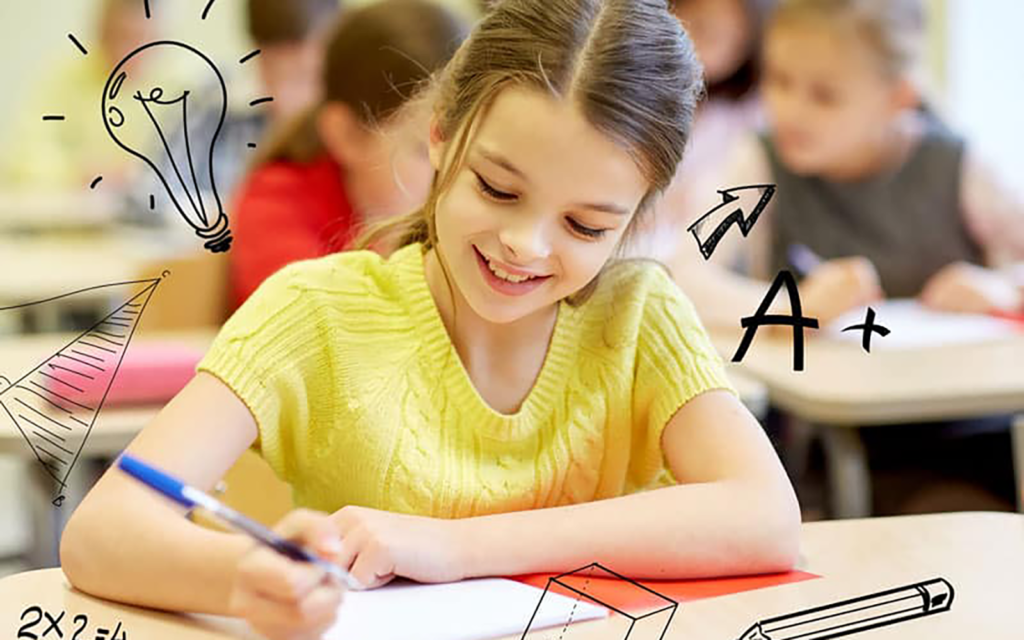
Support for Diverse Learning Styles
One of the most critical features of an inclusive learning environment is its ability to adapt to how different children learn. Some children need repetition; others thrive with exploration. Some children grasp abstract concepts quickly; others need hands-on, concrete examples.
A truly inclusive learning environment definition includes who is welcomed into the space and how the learning process accommodates them. Inclusive learning approaches often include flexible classroom design, varied instruction methods, and learning centers where children can choose how they engage.
This flexibility is vital in early childhood, where learning differences are often emerging but not yet diagnosed. Offering variety in teaching methods allows educators to observe what works best for each child and adjust accordingly.
Children who benefit from inclusive learning practices are more likely to stay motivated, experience success, and build a positive association with learning. These gains are not limited to children with special needs—every child benefits when instruction is responsive, compassionate, and inclusive.
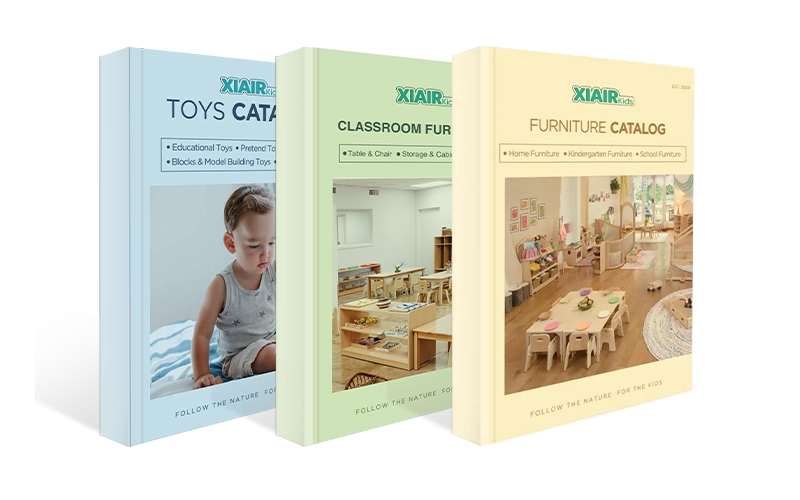
Receive a free catalog and custom layout to help you design your ideal classroom easily.
Understanding Others
ال فصل ما قبل المدرسة is often a child’s first experience of a social community outside the home. What they learn here about respect, kindness, and cooperation shapes how they treat others.
A well-designed, inclusive learning environment becomes a living lesson in empathy. When children learn alongside peers with different abilities, languages, and experiences, they begin to appreciate that difference is not something to fear—it’s something to value.
Inclusivity in learning helps children develop the social skills to communicate across differences, resolve conflict peacefully, and include others. These are essential life skills, especially in today’s diverse and interconnected world.
The benefits extend beyond the classroom. Children raised in inclusive learning environments tend to be more accepting and less biased. They’re more prepared to participate in inclusive societies and workplaces as adults. These aren’t just emotional outcomes—they’re educational ones too. Classrooms built on empathy are more cooperative, productive, and resilient.

Normalization of Differences
One of the most powerful outcomes of an inclusive learning environment is the normalization of human differences. In traditional classrooms, children who appear, speak, or learn differently are often singled out—intentionally or not. However, when classrooms are built around inclusivity in learning, differences are no longer unusual—they are expected and respected.
Inclusive learning environments intentionally expose children to various abilities, backgrounds, and learning methods. This consistent exposure helps children understand that no two people are the same, and that’s not just acceptable, it’s valuable.
Over time, assistive tools, differentiated activities, or peer support become part of the daily routine. A child with hearing aids is not seen as different. A child who needs a quiet corner to focus is not isolated. This is the true purpose of inclusive learning practices—to create a shared culture where everyone participates in their way without fear or stigma.
The result? A generation of children who grow up without attaching shame or hierarchy to difference. Instead, they learn that learning diversity is as normal as diversity in height or personality.
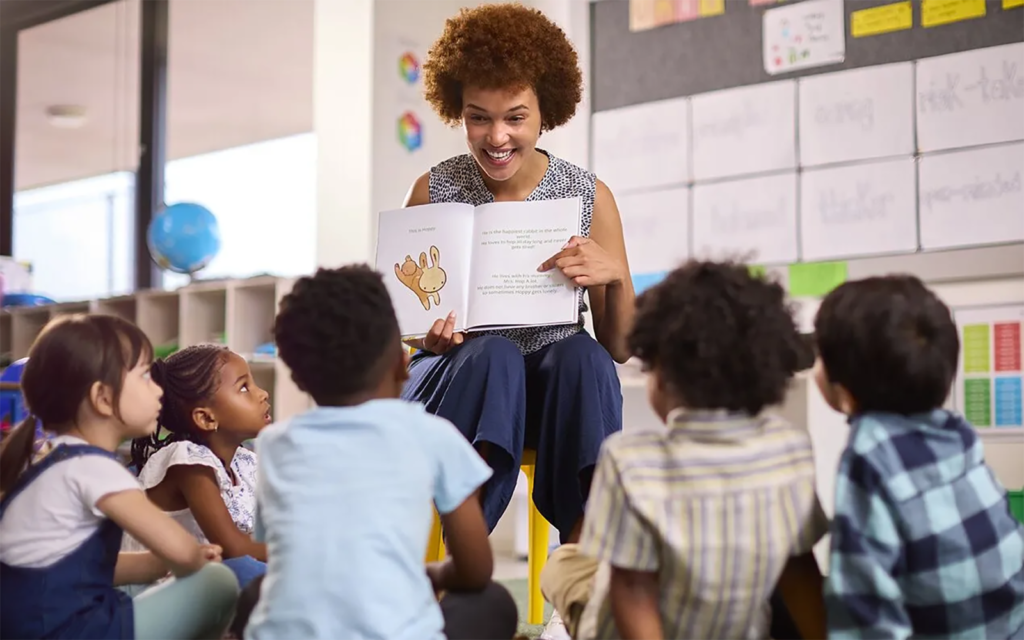
Equal Learning Expectations
Inclusive learning theory emphasizes that all children can learn and progress, given the proper support. In practice, this means setting meaningful goals for each child and offering the resources needed to meet them. It does not mean setting lower benchmarks for children with disabilities or those who learn differently.
Teachers can ensure that every child is challenged and supported by inclusive learning approaches such as scaffolded instruction, tiered assignments, and individualized education plans. The key is not to treat every child the same, but to provide equal opportunity for learning, growth and achievement.
In this way, inclusive learning environments uphold academic integrity while being humane and responsive. Children learn that effort, not ability level, leads to success.

Receive a free catalog and custom layout to help you design your ideal classroom easily.
تنمية المهارات الاجتماعية
Preschool is one of the first structured social environments for young children. It lays the foundations of teamwork, communication, and emotional intelligence. Inclusive learning environments enrich this process by offering a dynamic mix of peer interactions and cooperative experiences.
When students of varying backgrounds and abilities learn together, they naturally develop stronger social skills. In classrooms where inclusive learning strategies are embedded, children engage in collaborative play, mixed-ability group work, and conflict resolution. These activities help them understand perspectives different from their own.
More importantly, inclusion fosters compassion and patience. A child who learns to wait while a peer with speech delays finishes their thought is learning more than language—they’re learning respect. A child who helps a classmate with mobility challenges is developing empathy in action.
Social development is not a side benefit but a central goal of early education. Inclusive learning environments ensure that this development is not limited to interactions between similar peers but is extended to embrace true diversity.
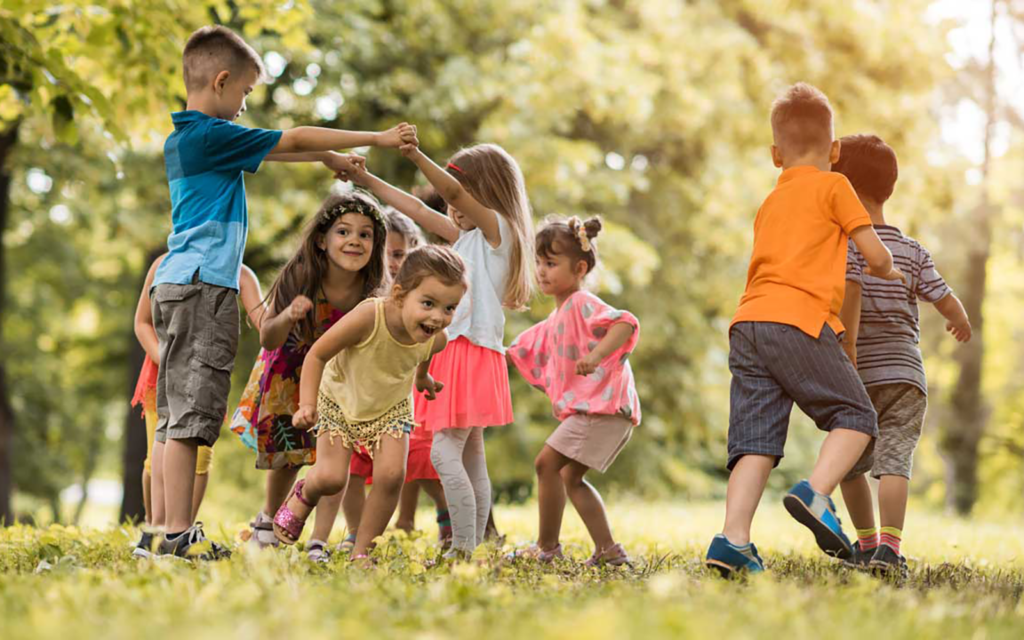
Real-World Readiness
The world children will grow into is not uniform. It is diverse, multicultural, and filled with people of all abilities, languages, and backgrounds. Inclusive learning environments prepare children for this reality in a meaningful, lived way.
Inclusion in early childhood sets the tone for how children will respond to differences in adulthood. Students who grow up learning alongside neurodiverse peers, children from immigrant families, and students with physical differences are more likely to become inclusive adults. They will enter workplaces, communities, and families with tolerance, adaptability, and inclusive communication skills.
Inclusive learning environment strategies, such as diverse classroom libraries, multicultural celebrations, and collaborative peer mentorship, mimic the social dynamics children will encounter in real life. Instead of being surprised or uncomfortable around differences, these children approach others with curiosity and respect. Inclusion teaches children how to survive and thrive in the real world by modeling the structure of society within the classroom.
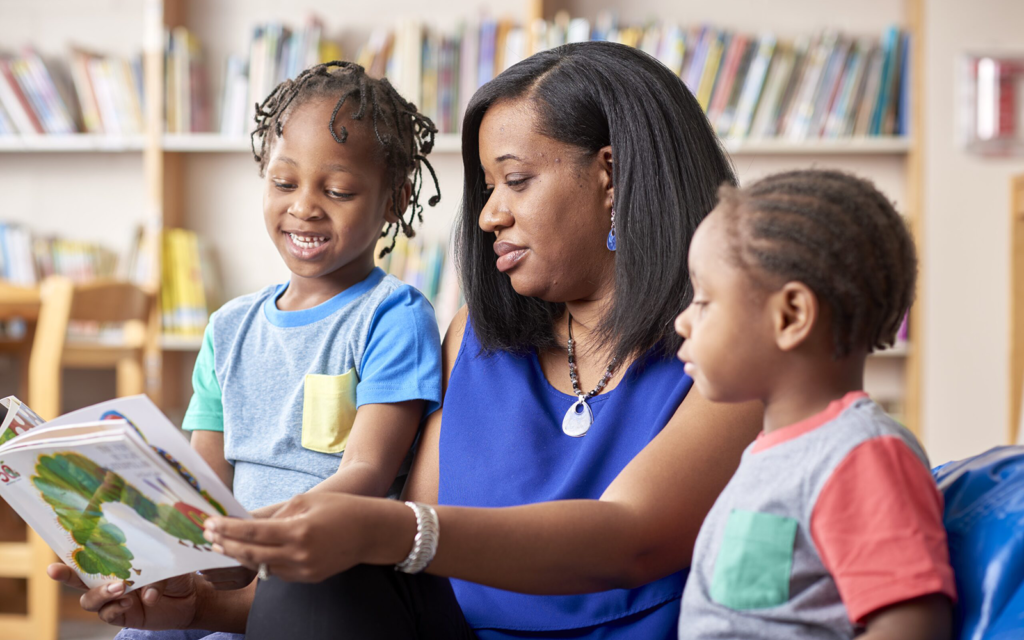
Confidence Boost
Confidence is the fuel of lifelong learning. In a traditional setting, children who struggle to keep up with the pace or form of instruction may begin to internalize failure. But inclusive learning environments are structured to catch those children before they fall, and to remind them that learning doesn’t look the same for everyone.
Through differentiated instruction and inclusive learning strategies, children experience success on their terms. A child who may not excel in verbal storytelling might shine in building or drawing. When these diverse expressions of intelligence are recognized and celebrated, the child learns they have value.
Confidence comes not from easy success, but from being supported through challenge. Children feel capable when they receive constructive feedback, emotional encouragement, and targeted support. Inclusive learning practices help them face setbacks without shame and celebrate achievements without comparison.
As confidence builds, so does motivation. Children become more willing to try, take risks, and push their boundaries—all crucial skills for academic and personal success.

Receive a free catalog and custom layout to help you design your ideal classroom easily.
What Are the Components of the Inclusive Behavior Learning Framework?
In early childhood education, managing behavior is not simply about correcting missteps but guiding children through self-regulation, social understanding, and emotional resilience. Behavior support must be integrated into the broader inclusion framework regarding inclusive learning environments. This is where the Inclusive Behavior Learning Framework becomes essential.
Assign Group Activities
Inclusion starts with collaboration. Assigning structured, mixed-ability group activities is one of the most effective strategies for building early learners’ empathy, communication skills, and behavioral maturity.
When thoughtfully designed, group work becomes a tool for learning academic content and practicing social norms—turn-taking, listening, managing frustration, and offering peer support. For example, a building project that requires four children to work together can highlight natural opportunities for negotiation, shared responsibility, and emotional regulation.
In inclusive learning environments, group activities are not assigned randomly. Educators intentionally compose groups that reflect diverse abilities, languages, and behavioral profiles. The goal is to create opportunities for peer modeling, where children can learn from one another’s strengths.
To be effective, group tasks should be:
- Structured with defined roles
- Matched to children’s developmental levels
- Supported by the teacher’s active guidance and feedback
Understanding that group activities must go beyond simply putting children together is essential. Without structure and support, such setups can reinforce exclusion or highlight differences. But when properly facilitated, group activities promote inclusive learning practices that model cooperation and belonging.

Use Differentiated Instruction
Differentiated instruction is a cornerstone of academic and behavioral inclusion. Essentially, it means adapting how content is delivered, how students interact with it, and how they demonstrate understanding—all based on individual needs.
From a behavior learning perspective, this strategy acknowledges that not all disruptive behaviors come from disobedience. Often, they arise from frustration, confusion, or unmet sensory needs. A child may act out simply because the material is too complicated or because the learning style doesn’t match their processing strengths.
By using inclusive learning strategies such as:
- Visual aids for visual learners
- Movement-based tasks for kinesthetic learners
- Quiet, sensory-friendly spaces for overstimulated children
In an inclusive behavior framework, differentiated instruction also includes offering choices. For example, allowing children to choose between drawing, talking, or building with blocks to demonstrate understanding of a concept. This supports learning styles and reduces behavioral resistance by giving children a sense of agency.
Differentiation is also vital in group settings. Some students may thrive in leading a task, while others are more comfortable observing or contributing through art or discussion. Recognizing and respecting these differences is what makes learning truly inclusive.
Leverage Ed Tech
When used wisely, technology can significantly enhance inclusive learning environments, especially when it comes to supporting behavior regulation and engagement.
In the context of behavioral learning, educational technology (ed tech) can be a powerful tool to:
- Reinforce routines (e.g., visual daily schedules on a tablet)
- Guide social interactions (e.g., role-playing games or video modeling)
- Track emotional states (e.g., mood check-in apps with symbols and colors)
Many children, especially those on the autism spectrum or with attention challenges, respond well to digital supports that offer precise, repeatable, and visually rich content. These tools allow children to self-monitor and become more aware of their behaviors and emotions.
Furthermore, ed tech provides an alternative way for children with language or communication difficulties to participate. Children who struggle to express themselves verbally can use a communication device to signal their needs or responses, reducing frustration and preventing outbursts.
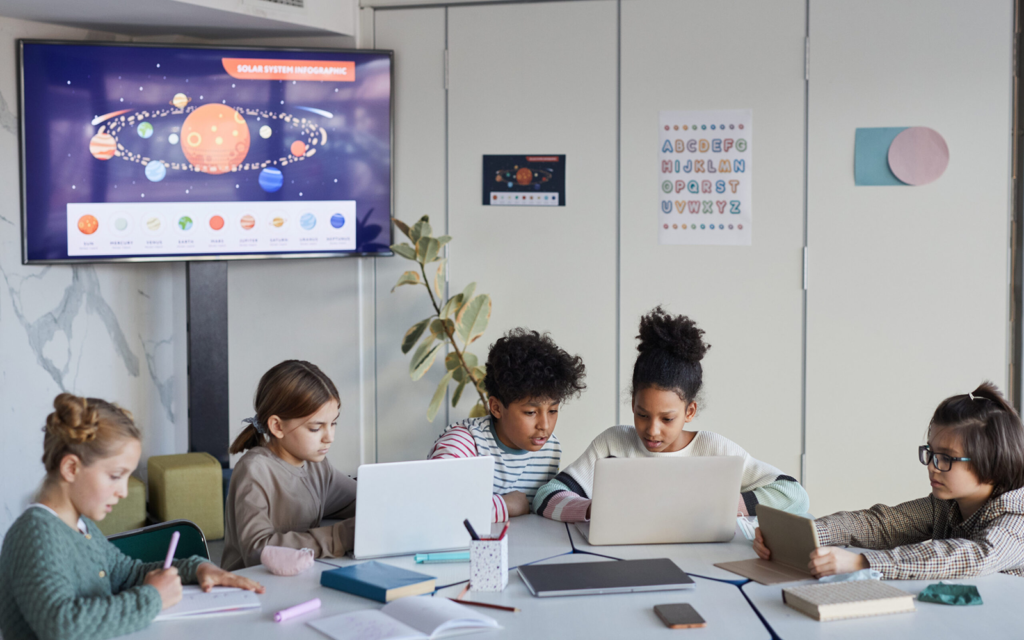
Follow Individualized Instruction Plans
Individualization is non-negotiable in any truly inclusive setting. While whole-class routines are necessary, they must be flexible enough to accommodate the unique behavioral needs of individual children. This is where Individualized Instruction Plans (IIPs) or Behavior Intervention Plans (BIPs) come in.
These plans are developed in collaboration with specialists, therapists, and families. They identify triggers, replacement behaviors, supports, and goals for children needing focused assistance. But more importantly, they represent a commitment to inclusion—the belief that all children deserve the chance to learn in the same environment, even if they require different pathways.
Individual plans might include:
- Adjusted schedules to prevent overstimulation
- Visual or tactile supports for transitions
- Calming strategies like weighted tools or sensory breaks
- Clear, positive reinforcement plans
When these plans are shared with all classroom staff and consistently implemented, they become a seamless part of the daily routine, not an exception. This promotes consistency, trust, and stability—critical factors in behavioral growth.

Receive a free catalog and custom layout to help you design your ideal classroom easily.
Strategies for Creating an Inclusive Learning Environment
Creating an inclusive learning environment requires more than good intentions. It calls for intentional action, structured planning, and thoughtful classroom leadership. Educators who apply the right inclusive learning strategies build a classroom culture where students are respected, supported, and positioned for success.
While no two classrooms look the same, core practices consistently lead to greater inclusion in learning. Below are two foundational strategies educators can apply to foster a stronger sense of community, accessibility, and equity for all learners.
Establish a Safe Classroom Culture
أ safe classroom culture is the cornerstone of any inclusive learning environment. When students feel emotionally and physically safe, they are far more likely to engage, take academic risks, and build meaningful relationships with peers and teachers. In this context, safety goes beyond physical protection—it includes psychological and social safety, especially for students from marginalized or underrepresented backgrounds.
Inclusive learning begins with trust. Teachers must create consistent, respectful, trauma-informed routines, expectations, and interactions. Classroom agreements—developed with student input—can reinforce norms like listening with empathy, using inclusive language, and honoring different perspectives.
Daily routines also play a critical role. Welcoming students by name, checking in on their emotional states, and creating predictable transitions are small but powerful actions that signal care and respect. These are routines and part of a larger system of inclusive learning practices that help children feel seen and safe.
Make Learning Accessible
Accessibility is central to inclusivity in learning. An inclusive learning environment is not just about who is in the room—it’s about ensuring that everyone can fully engage with the material. This means removing barriers and offering multiple ways for students to access, process, and demonstrate knowledge.
Inclusive learning strategies emphasize flexibility in both teaching and assessment. Not all students learn the same way or at the same pace. Some may need visual supports; others may require tactile experiences or extended processing time. By applying inclusive learning approaches, educators ensure that lessons are responsive rather than restrictive.
Accessibility also extends to language, culture, and background knowledge. Teachers must remember that certain idioms, historical references, or cultural assumptions may exclude or confuse kids from different backgrounds. Adjusting content to reflect the classroom’s diversity is inclusive and improves comprehension and engagement for all students.
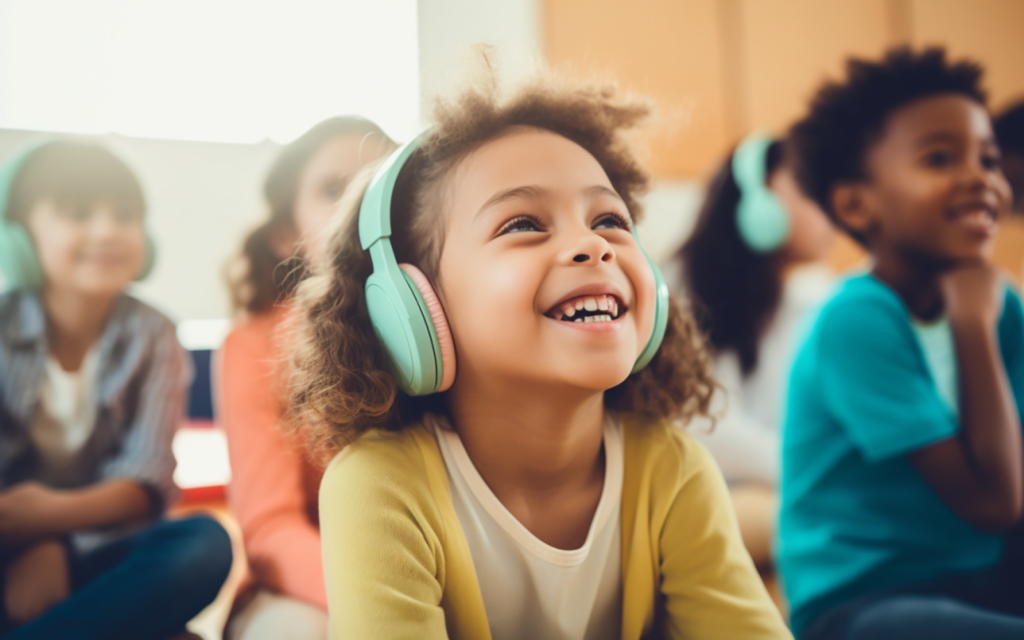
Preschool Furniture Shapes an Inclusive Learning Environment for Every Child
Designing an inclusive learning environment begins with an intentional classroom setup, starting with the right preschool furniture. Inclusive education isn’t only about teaching strategies; it’s also about creating a physical space where every child, regardless of ability, size, or background, can engage fully and safely in learning. High-quality, child-centered furniture supports inclusive learning by providing comfort, accessibility, and flexibility.
الطاولات والكراسي
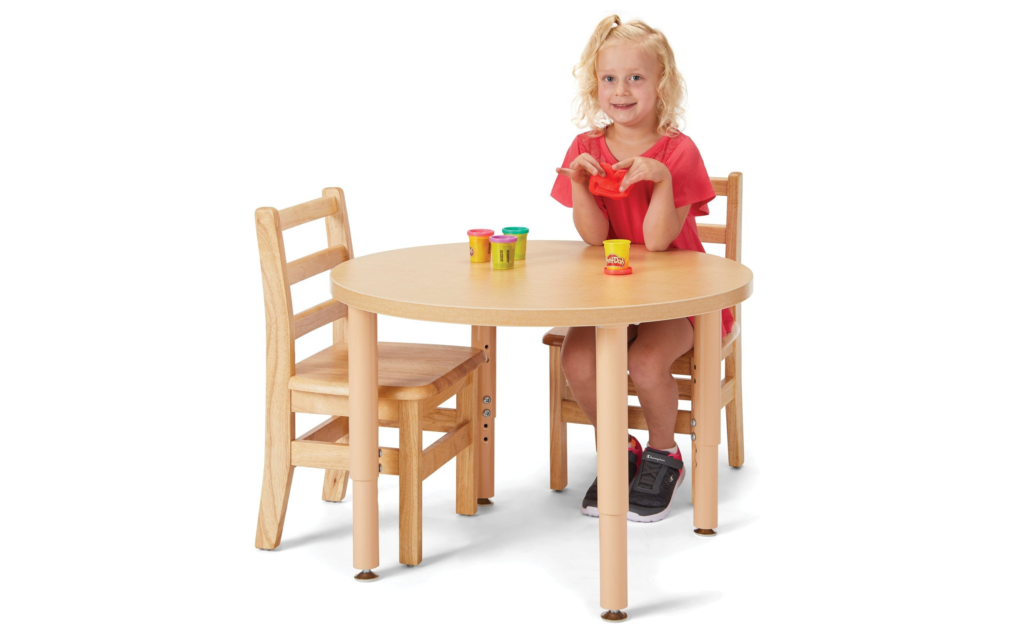
Well-designed tables and chairs support an inclusive learning environment by accommodating diverse body sizes, abilities, and learning styles. They promote comfort, accessibility, and equal participation for all children.
تخزين الفصول الدراسية
Classroom storage supports an inclusive learning environment by keeping materials organized and accessible to all children, including those with mobility or sensory needs, fostering independence and equal participation.
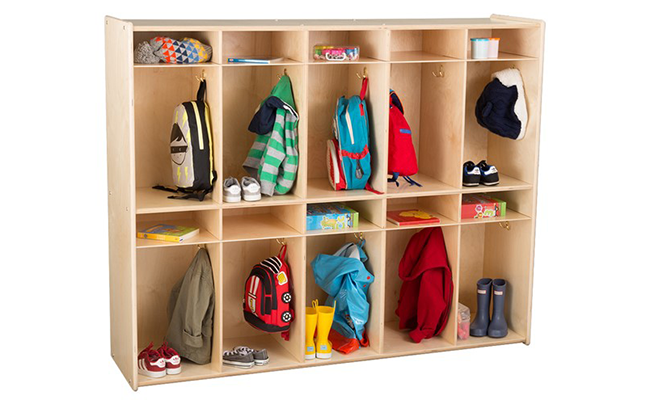
Bookshelf & Bookcases
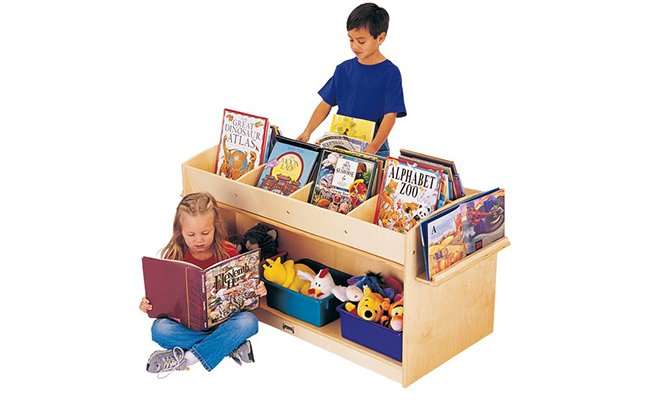
Bookshelves and bookcases offer easy, visible access to books for all children, encouraging independent exploration, literacy, and equal learning opportunities.
مواد مونتيسوري
Montessori materials offer hands-on, self-correcting tools that cater to different learning styles and paces. They promote independence, confidence, and active engagement for all children.

In short, thoughtfully designed أثاث ما قبل المدرسة is a silent teacher. It communicates belonging, promotes autonomy, and ensures no child is excluded from the learning experience because of physical or developmental differences. That’s what turns a classroom into a truly inclusive learning environment.
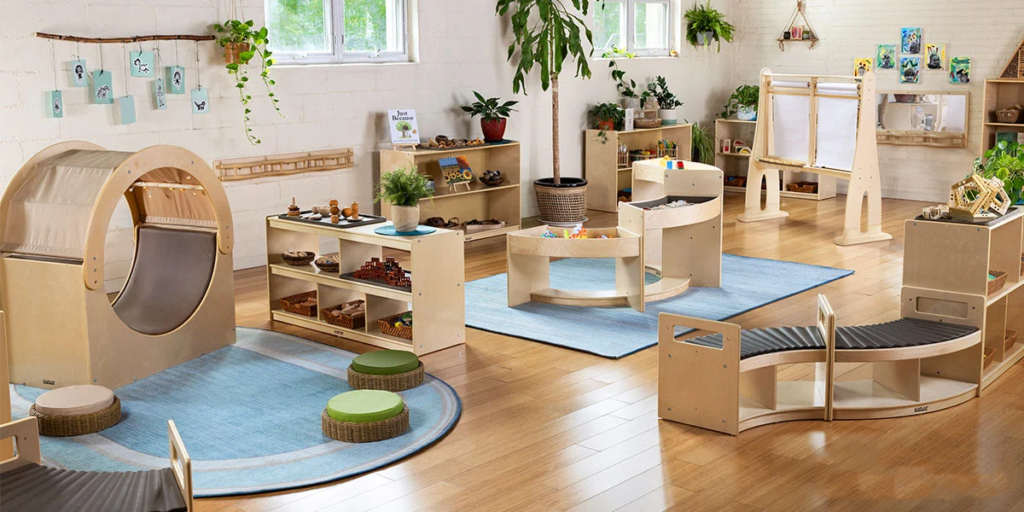
Create an Inclusive Learning Environment
Creating an inclusive learning environment is not a checklist—it’s an intentional, continuous process. It requires educators to make choices that reflect equity, cultural sensitivity, and respect in every interaction and every lesson. When done right, it transforms classrooms into spaces where all children feel seen, valued, and capable of learning.
Encourage Respectful and Equitable Classroom Conversations
Classroom discussions must be structured so every child has a voice to support inclusion in learning. This means going beyond open participation to ensure that even quieter or less confident children are heard.
This might include:
- Using think-pair-share formats so students can rehearse answers before speaking
- Allowing visual or written responses for children with speech delays or language barriers
- Encouraging active listening through sentence starters like “I agree with…” or “I hear you saying…”
These tools help make participation safe and equitable, especially for children from diverse linguistic or cultural backgrounds. Respectful conversation builds trust, and trust invites deeper engagement. When students know their input is welcome, they take greater ownership of learning.
Use Small Groups for Inclusive and Cross-Cultural Learning
Small group activities foster collaboration and help children build empathy across differences. When designed with intention, these groups support peer learning, reduce pressure, and promote inclusive learning practices.
This might include:
- Grouping students of different backgrounds and learning styles together
- Assigning rotating roles (e.g., speaker, recorder, helper) to balance group dynamics
- Using projects that require cooperation instead of competition
This structure builds confidence and promotes connection while reducing isolation. It also allows students to see strengths in others they might not otherwise notice. Inclusive group work encourages mutual support and helps dismantle stereotypes early.
Acknowledge Sensitive Cultural and Social Differences When Appropriate
Avoiding topics like race, language, or class can unintentionally exclude students. Instead, educators should be prepared to respectfully recognize and address differences in ways that affirm identity and promote understanding.
This might include:
- Inviting students to share family traditions during culturally relevant times
- Discussing characters in books that reflect various backgrounds
- Creating space for students to ask questions about visible or invisible differences
Acknowledging these realities strengthens the community and reinforces the value of every child’s identity. It also builds students’ awareness and appreciation for diversity beyond their experience. These discussions help create thoughtful, empathetic learners.
Model Inclusive Language
Language is a powerful tool for creating a respectful environment. Educators set the tone for classroom communication, and children quickly pick up on the terms and tone used by adults.
This might include:
- Using person-first language (e.g., “a child with autism” rather than “an autistic child”)
- Avoiding generalizations like “boys don’t cry” or “girls are better at reading”
- Learning and using students’ correct names and pronunciations
Modeling inclusive language teaches students how to speak to and about others with care and respect. It also fosters a culture where differences are normalized rather than othered. Over time, inclusive speech becomes part of the classroom’s shared values.

Use Multiple and Diverse Examples
Children need to see themselves—and others—represented in the curriculum. Including varied examples ensures that every child feels learning is for them and supports different learning preferences.
This might include:
- Using books and images that reflect different races, family types, and abilities
- Including holidays, foods, or games from multiple cultures in lessons
- Offering tasks that let students choose how to respond—through speaking, drawing, or building
By doing this, teachers send a clear message: everyone belongs in this classroom and this learning process. Representation deepens engagement by helping students connect new concepts to familiar experiences, making learning more meaningful and memorable.
Personally Connect with Students
Connection doesn’t require grand gestures—it’s built through consistent, genuine interactions. Greeting each child by name, noticing changes in their mood or behavior, and showing interest in their stories or backgrounds creates emotional safety and trust. These small moments become the foundation for deeper engagement and positive behavior.
This might include:
- Having one-on-one check-ins during free time or morning meetings
- Asking about students’ interests, family traditions, or favorite activities
- Using student-chosen examples in lessons to make content personally relevant
When students feel understood personally, they are more likely to participate, take risks, and build positive relationships with peers. Personal connection is not an extra—it’s essential to inclusion and long-term learning success.
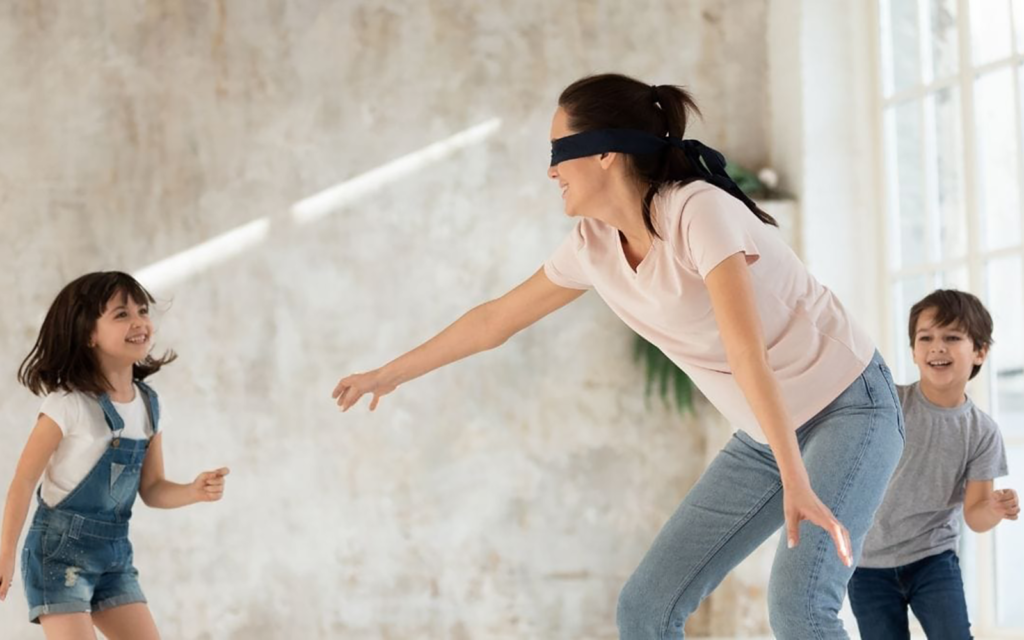
Provide Alternative Means for Participation
Not every student communicates or engages in the same way. An inclusive learning environment offers multiple avenues for participation so that all children feel empowered to contribute.
This might include:
- Using drawings, gestures, or physical models instead of verbal responses
- Allowing students to demonstrate understanding through movement or visuals
- Offering quiet reflection time before group discussions
Alternative options ensure that students who are shy, neurodiverse, or English learners are not excluded from the learning experience—they’re offered a different path to success.
Respectfully Communicate with Students
Tone, language, and body language affect how students perceive their place in the classroom. Teachers must always model respectful communication, especially when offering correction or guidance.
This might include:
- Using calm, non-shaming language during behavioral redirection
- Validating students’ emotions before addressing behavior
- Asking open-ended questions instead of making assumptions
Respect builds trust. When students feel respected, they’re more likely to respect others and contribute positively to the classroom culture.
Address Offensive, Discriminatory, and Insensitive Comments
Ignoring harmful language allows it to grow. In an inclusive learning environment, educators must be willing to address inappropriate comments firmly and constructively to maintain a space of safety and dignity.
This might include:
- Pausing the instruction to clarify why a comment is problematic
- Guiding the student toward more respectful language
- Facilitating short discussions that reaffirm class values of inclusion
Correcting these behaviors early teaches all students that the classroom is a respectful space for everyone. Proactive intervention prevents long-term harm and reinforces boundaries that protect every person’s identity, dignity, and emotional well-being.
Perform a Self-Assessment
Inclusion begins with self-awareness. Teachers must regularly reflect on their beliefs, teaching practices, and possible biases affecting classroom equity.
This might include:
- Journaling after challenging classroom interactions
- Seeking feedback from peers or mentors
- Comparing representation in classroom materials across cultures and abilities
By evaluating their inclusivity, educators stay aligned with best practices and remain open to growth. Self-reflection isn’t just professional—it’s essential to modeling humility and lifelong learning for students.
Build Relationships
Inclusion thrives on authentic relationships. When teachers take time to understand their students individually, they can better support their social and emotional needs.
This might include:
- Learning about students’ home languages or cultural backgrounds
- Noticing individual strengths and acknowledging them in daily interactions
- Holding brief personal conversations during arrival or playtime
Strong relationships increase student engagement, reduce behavior issues, and strengthen learning outcomes. Students who feel genuinely connected to the adults guiding them are more likely to persevere and take academic risks.
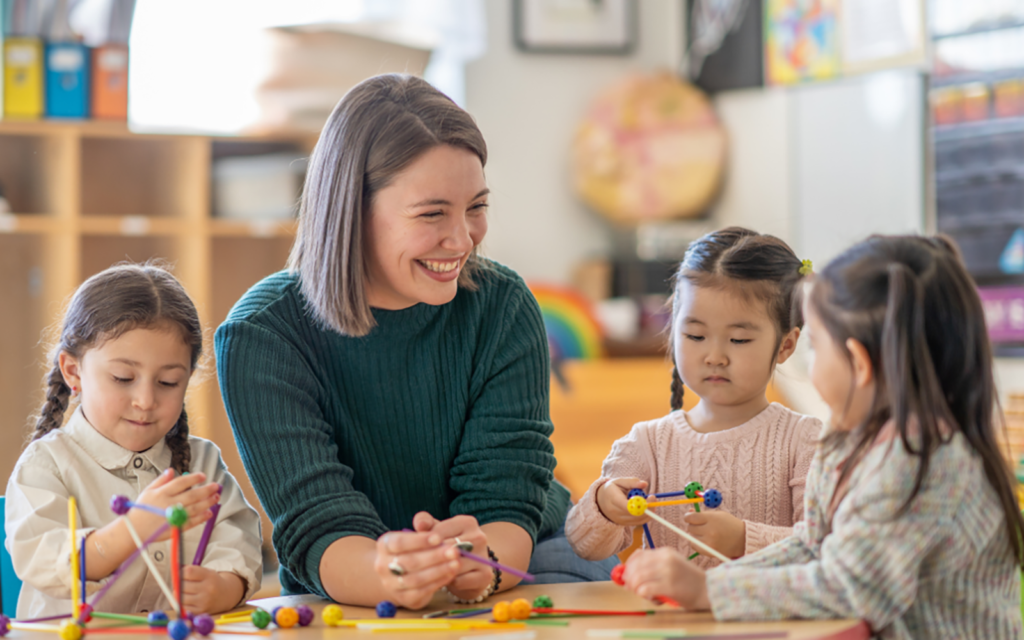
Provide Rigorous Activities for Each Level
Inclusion doesn’t mean lowering expectations. Instead, it means providing challenging, meaningful tasks accessible to all learners through differentiation.
This might include:
- Offering tiered assignments that meet students at different readiness levels
- Using open-ended tasks with multiple entry points
- Encouraging critical thinking and creativity regardless of skill level
When every student is intellectually challenged, they remain engaged and motivated to grow. When paired with appropriate support, high expectations show students that their capabilities are trusted and their growth is expected.
Provide Opportunities for Collaborative Learning
Learning from peers is central to both academic and social development. Inclusive classrooms are built around structured collaboration, not just individual performance.
This might include:
- Partner work that rotates regularly to expose students to different perspectives
- Group projects that require shared decision-making and accountability
- Peer feedback sessions to promote active listening and respect
Collaboration nurtures empathy, improves communication, and breaks down social barriers.
It helps children value teamwork over competition and recognize the strengths others bring to the group.
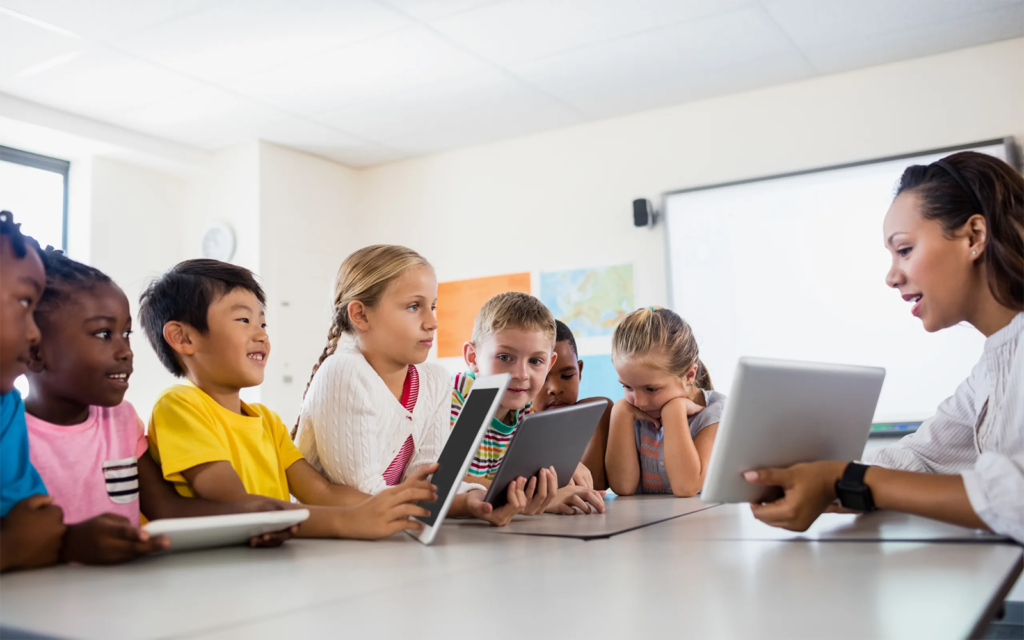
Allow Support
Some students need additional tools or adult guidance to access learning. Allowing this support without stigma is a cornerstone of an inclusive learning environment.
This might include:
- Having paraprofessionals assist without isolating students
- Allowing noise-canceling headphones, visual cues, or movement breaks
- Normalizing the use of adaptive tools as part of classroom life
Support helps students succeed on their terms—and signals to others that everyone deserves the help they need. When support is integrated respectfully, it promotes equity and reinforces a culture of shared responsibility and care.
Allow Mistakes
Inclusion also means creating space for imperfection, risk, and recovery. Students must feel safe to make mistakes without fear of punishment or shame.
This might include:
- Celebrating effort alongside accuracy
- Reframing errors as learning opportunities
- Using language like “Let’s try another way” instead of “That’s wrong”
Allowing mistakes helps build resilience, persistence, and emotional safety—essential for authentic learning. In a truly inclusive classroom, failure is not final—it’s part of the process, and every mistake is a step forward.

Receive a free catalog and custom layout to help you design your ideal classroom easily.
How Does Inclusive Education Promote Successful Learning?
Creating an inclusive learning environment is one of the most effective ways to ensure all students succeed academically, socially, and emotionally. Inclusive education fosters a sense of belonging where every child, regardless of background, language, or ability, is valued and supported.
At its core, inclusive learning is about access and equity. Instead of teaching in one way for all students, educators use inclusive learning strategies to meet the unique needs of every learner. This includes differentiated instruction, multimodal teaching methods, and culturally responsive materials. These inclusive learning approaches help remove learning barriers and provide multiple pathways to understanding.
A well-structured, inclusive learning environment benefits more than just students with disabilities or language challenges. When classrooms are designed to reflect inclusivity in learning, every student experiences higher engagement and stronger connections to the content. Participation increases, behavior improves, and confidence grows.
Emotional safety is another key factor. When students feel safe, seen, and respected, they are likelier to take academic risks, ask questions, and collaborate with peers. Inclusion builds trust, and trust is the foundation for long-term learning success.
Moreover, inclusion in learning promotes empathy, teamwork, and respect for diversity. Students learn to work with peers who may think, speak, or move differently from themselves. These interactions support both social development and cognitive growth.
In short, an inclusive learning environment isn’t just good practice—it’s essential. By embracing diversity, inclusive education prepares students for lifelong learning.

Behavior Management and Social-Emotional Learning in Inclusive Settings
Effective behavior management goes hand in hand with social-emotional learning (SEL) in an inclusive learning environment. Rather than relying on rigid discipline systems, inclusive classrooms prioritize relationships, emotional safety, and proactive strategies that address the root causes of behavior.
In inclusive settings, children come with diverse emotional needs, cultural backgrounds, and communication styles. A one-size-fits-all approach doesn’t work. Instead, educators use inclusive learning strategies such as visual routines, emotion regulation tools, and positive reinforcement to guide behavior constructively.
Social-emotional learning plays a foundational role. When children are explicitly taught how to recognize emotions, resolve conflicts, and express needs respectfully, they become more self-aware and socially responsible. SEL supports all students, but primarily benefits those who may struggle with impulse control, anxiety, or trauma.
Behavior management in inclusive classrooms is not about control—it’s about connection. Teachers who lead with empathy, consistency, and respect help create an environment where every child can learn, grow, and feel safe. This integration of SEL and behavior support is what makes inclusion not only possible but powerful.
الأسئلة الشائعة
1. How does classroom design influence an inclusive learning environment?
Classroom design plays a crucial role in supporting inclusion. The layout, furniture, and materials must allow for easy movement, quiet reflection, and independent exploration. Inclusive preschool spaces feature open-access storage, adjustable furniture, and clearly defined zones for different activities, ensuring every child can engage with the environment safely and confidently.
2. What role does furniture play in emotional safety for young children?
Preschool furniture that’s child-sized, stable, and adaptable helps children feel secure and capable. Soft edges, calming colors, and sensory-friendly materials contribute to emotional regulation. When children feel physically comfortable and autonomous in their environment, they are more likely to engage calmly and confidently with peers and learning activities.
3. How can teachers promote inclusion without singling out students with special needs?
Effective inclusion doesn’t separate—it integrates. Teachers can offer universal supports like visual schedules, flexible seating, and calm-down corners for all students. By embedding these tools into daily routines, they become part of the classroom culture rather than something “special,” helping all children feel equally supported.
4. What are the signs of successful social-emotional development in an inclusive setting?
In inclusive classrooms, children show emotional growth by expressing their feelings healthily, showing empathy to peers, and cooperating in group activities. A well-implemented social-emotional learning (SEL) program helps students build self-awareness, manage frustration, and form positive relationships—key indicators of long-term social success.
5. How can inclusive learning strategies support language development?
Inclusion encourages rich language experiences through peer interaction, story-sharing, and exposure to diverse vocabulary. Inclusive learning approaches often incorporate visuals, gestures, and multiple languages to support dual-language learners. Collaborative play and open-ended activities also create natural, meaningful opportunities for communication.
6. What should educators consider when choosing preschool furniture for inclusive classrooms?
When selecting furniture for inclusive classrooms, educators should prioritize flexibility, safety, accessibility, and independence. Look for items that serve multiple functions, accommodate different physical needs, and empower children to choose. Furniture should support individual learning and collaborative interaction without creating barriers for participation.
خاتمة
Creating an inclusive learning environment in early childhood education is not a one-time initiative—it’s an ongoing commitment to equity, accessibility, and respect. Every element, from classroom layout to instructional methods, must work together to ensure that all children can thrive regardless of ability, background, or learning style.
High-quality, flexible preschool furniture enables independence and physical comfort, helping students confidently engage with their surroundings. Meanwhile, effective behavior management and intentional social-emotional learning create a classroom culture built on trust, empathy, and cooperation.
In short, inclusion is not just about who is in the room—it’s about how the room works for everyone. When we design learning environments that support all children, we don’t just improve education—we transform it.

